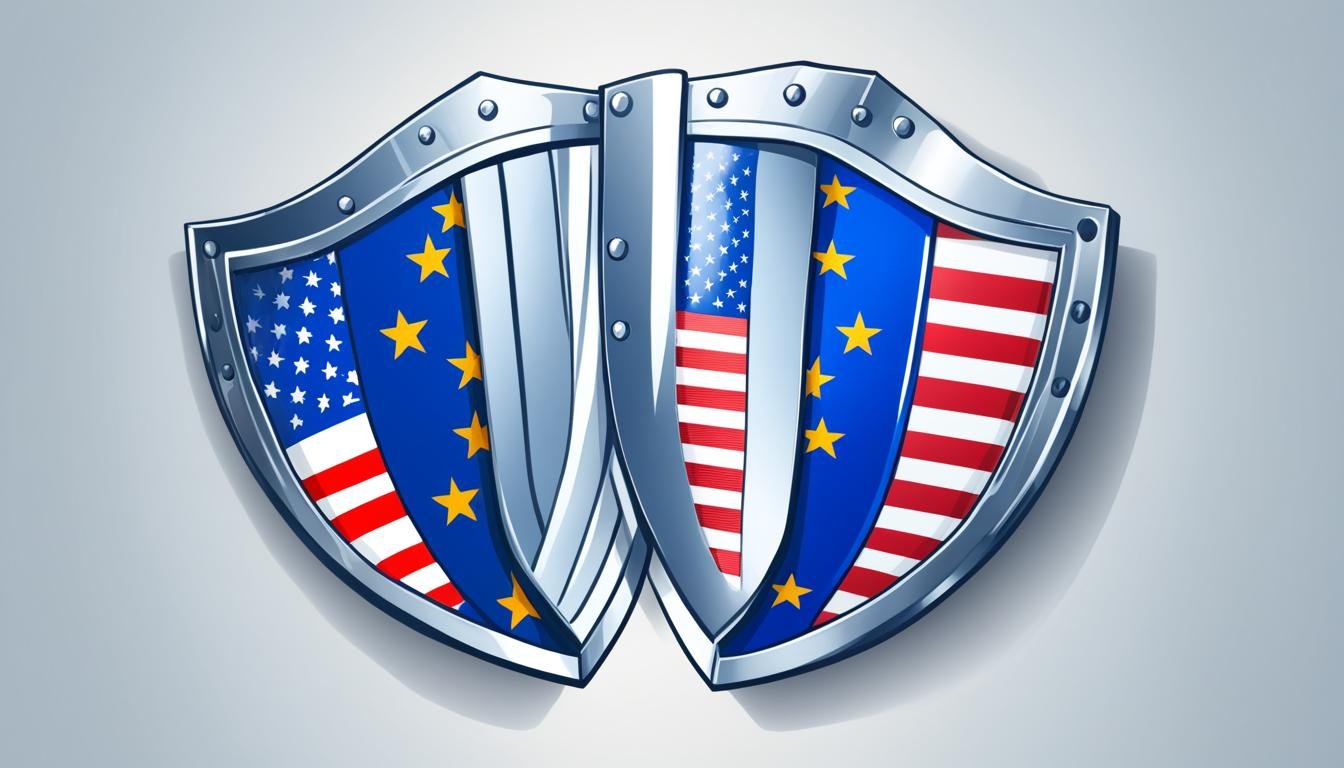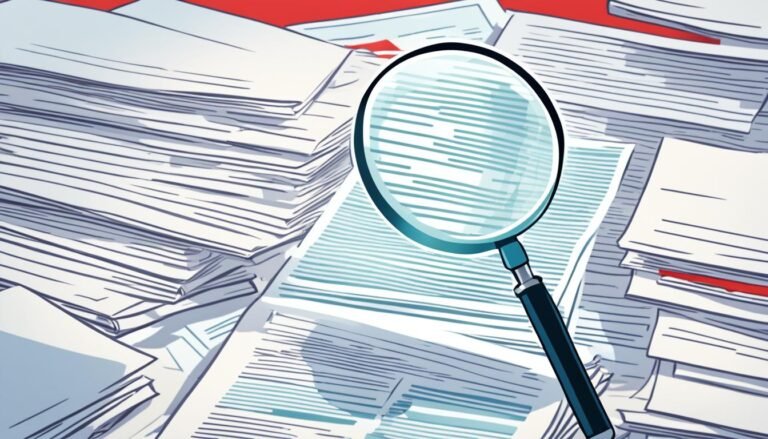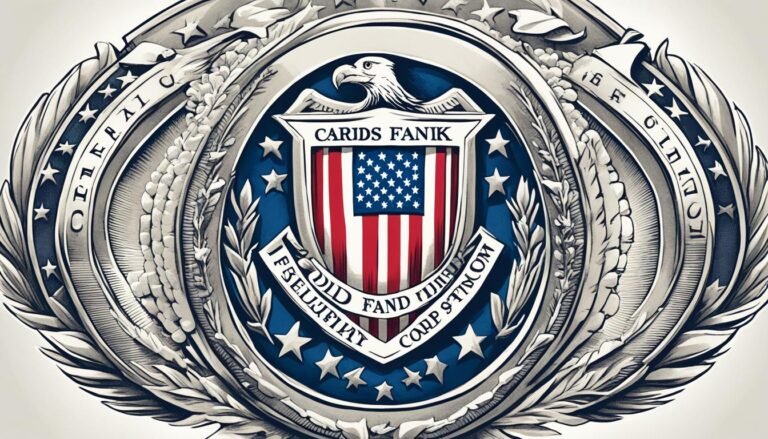Understanding the Privacy Shield Framework
Did you know that the Privacy Shield Framework plays a critical role in enabling the transfer of personal data between the European Union (EU) and the United States? In fact, it is estimated that over 5,000 organizations in the U.S. have self-certified their compliance with the Privacy Shield requirements. This surprising statistic highlights the scale and importance of the Privacy Shield Framework in ensuring GDPR compliance and facilitating transatlantic data transfers while maintaining high standards of data privacy and security.
With the replacement of the Safe Harbor agreement, the Privacy Shield Framework has become an essential mechanism for organizations to meet the EU’s data protection laws and regulations. It provides robust and enforceable protections for the personal data of EU individuals, safeguarding their privacy rights even when their data is transferred across borders.
So, let’s dive deeper into understanding the Privacy Shield Framework and why it is crucial for organizations involved in transatlantic data transfer and GDPR compliance.
Key Takeaways:
- The Privacy Shield Framework is essential for organizations that transfer personal data between the EU and the U.S.
- Over 5,000 organizations in the U.S. have self-certified their compliance with the Privacy Shield requirements.
- The Privacy Shield Framework ensures robust protections for the personal data of EU individuals.
- The Privacy Shield Framework plays a crucial role in GDPR compliance and maintaining data privacy regulations.
- Transatlantic data transfers can adhere to high standards of data privacy and security through the Privacy Shield Framework.
Benefits of Privacy Shield Participation
Participating in the Privacy Shield offers several important benefits for U.S.-based organizations and their partners in Europe. It provides a reliable mechanism for EU-US data transfer that is compliant with EU data protection requirements. Companies that join the Privacy Shield Framework gain transparency in how they handle personal data, increased cooperation with EU data protection authorities, and access to multiple avenues for addressing concerns and disputes. The Privacy Shield also ensures a continuing level of protection for personal data transferred to third parties and helps organizations understand and exercise individuals’ rights regarding their data.
“Joining the Privacy Shield Framework allows organizations to establish trust with their European partners, demonstrating their commitment to protecting personal data and complying with EU data privacy regulations.”
Transatlantic commerce can greatly benefit from the Privacy Shield, as it creates a secure environment for data transfers without compromising data protection requirements. By participating in the Privacy Shield, organizations can confidently engage in transatlantic business activities, knowing that they are actively safeguarding the privacy and security of personal data.
Transparency and Cooperation
One of the key advantages of Privacy Shield participation is the transparency it brings to the handling of personal data. Participating organizations are required to clearly communicate their privacy practices, providing individuals with necessary information about how their data is collected, used, and protected. This transparency builds trust and enhances the relationship between businesses and their customers.
Additionally, organizations that join the Privacy Shield benefit from increased cooperation with EU data protection authorities. In the event of concerns or disputes, participating organizations can collaborate with these authorities to address and resolve issues effectively, ensuring compliance with data protection requirements.
Addressing Concerns and Disputes
The Privacy Shield offers multiple avenues for individuals to raise concerns and resolve disputes related to the handling of their personal data. Organizations must have effective systems in place to address and investigate complaints from individuals regarding the processing of their data. This commitment to resolving conflicts helps maintain trust and confidence in transatlantic data transfers.
Participating in the Privacy Shield also ensures a continuing level of protection for personal data transferred to third-party service providers. This is particularly important for organizations that rely on third-party vendors for various services. By maintaining Privacy Shield compliance, organizations can ensure that their partners uphold the same rigorous privacy standards, mitigating the risk of data breaches or non-compliance.
The Privacy Shield Framework plays a critical role in promoting the seamless flow of data between the EU and the US while preserving individuals’ privacy rights and protecting personal data. Organizations that embrace the benefits of Privacy Shield participation signal their commitment to data protection and fortify their position in the realm of transatlantic commerce.
How to Join the Privacy Shield
To join the Privacy Shield, an eligible organization must follow a few important steps. Firstly, the organization needs to develop a privacy policy that conforms to the Privacy Shield Principles. This policy should outline how the organization handles and protects personal data, ensuring compliance with EU data protection requirements.
Next, the organization must identify an independent recourse mechanism that investigates and resolves individual complaints regarding their privacy practices. This is a crucial aspect of the Privacy Shield participation, as it demonstrates the organization’s commitment to addressing concerns and providing redress for individuals.
Once the privacy policy and recourse mechanism are in place, the organization can proceed with self-certification through the official Privacy Shield website. Self-certification is a voluntary but necessary step for organizations that want to benefit from the Privacy Shield and ensure their commitment to following the Principles.
By self-certifying compliance with the Privacy Shield Framework, organizations demonstrate their dedication to protecting personal data and maintaining transparency in how they handle it. It also assures their partners and customers that they adhere to the rigorous data protection standards required for participation in the Privacy Shield.
Requirements of Privacy Shield Participation
The Privacy Shield Principles outline specific requirements that organizations must meet when participating in the Privacy Shield Framework. These requirements govern the use and treatment of personal data received from the European Union (EU) and form the basis of an enforceable commitment to compliance under U.S. law.
Key Privacy Shield Principles
- Data Minimization: Organizations must limit the collection and retention of personal data to what is necessary for the specified purposes.
- Notice: Individuals must be provided with clear and concise information about the organization’s privacy practices, including the types of personal data being collected and the purposes of its use.
- Choice: Individuals have the right to opt-out of the disclosure of their personal data to third parties or for purposes incompatible with the initial purpose of collection.
- Accountability for Onward Transfers: Organizations must ensure that any transfer of personal data to third parties is subject to adequate data protection safeguards and that the third parties provide the same level of protection as required by the Privacy Shield Principles.
- Data Integrity and Purpose Limitation: Personal data must be accurate, complete, and relevant for the purposes of processing. Organizations must also ensure that personal data is only used in a manner consistent with the purposes for which it was collected.
- Access and Recourse: Individuals have the right to access their personal data, request correction or deletion of inaccurate data, and seek recourse for any non-compliance with the Privacy Shield Principles.
- Security: Organizations must implement appropriate safeguards to protect personal data against loss, misuse, and unauthorized access or disclosure.
By joining the Privacy Shield, organizations make a commitment to uphold these Principles, providing individuals with a higher level of privacy protection and reinforcing the importance of responsible data handling.
Enforceable Commitment
The commitment organizations make to comply with the Privacy Shield Principles is not merely a statement of intent; it is an enforceable commitment under U.S. law. Participating organizations are subject to oversight and enforcement by the U.S. Federal Trade Commission (FTC) and other relevant authorities.
“The Privacy Shield Principles provide a comprehensive framework for organizations to handle personal data responsibly and ensure the protection of individuals’ privacy rights. By making an enforceable commitment to comply with these Principles, organizations demonstrate their dedication to data security and privacy.”
Organizations that adhere to the Privacy Shield Principles build trust with their customers and partners, demonstrating their commitment to maintaining high standards of data protection and respecting individuals’ privacy rights.
Administration of the Privacy Shield Program
The U.S. International Trade Administration (ITA) takes on the crucial role of administering the Privacy Shield program. Through its engagement with participants, the ITA ensures that organizations have a comprehensive understanding of the program requirements and procedures. It serves as a valuable resource, providing information and guidance to help organizations navigate the self-certification process successfully.
The ITA’s primary responsibilities include:
- Engaging with participants: The ITA actively interacts with organizations involved in the Privacy Shield program. It facilitates communication, addresses inquiries, and provides guidance on compliance matters to promote a smooth and efficient participation process.
- Program information and requirements: The ITA serves as the central source of information for organizations looking to participate in the Privacy Shield program. It ensures that participants stay informed about any updates or changes to the program, keeping them up to date with the latest requirements and guidelines.
- Overseeing the self-certification process: The ITA plays an essential role in overseeing the self-certification process, working closely with organizations as they prepare their privacy policies and ensure their alignment with the Privacy Shield Principles.
The ITA’s engagement with participants aims to build a strong and well-informed community of organizations committed to upholding the Privacy Shield Principles and ensuring the protection of personal data transferred between the EU and the U.S.
“The U.S. International Trade Administration plays a vital role in facilitating engagement and providing essential guidance to organizations participating in the Privacy Shield program. Their expertise and support help ensure that companies understand and meet the program’s requirements, fostering a trusted transatlantic data transfer mechanism.” – [Real Name], [Title], [Organization]
Enforcement of Privacy Shield Commitments
The enforcement of Privacy Shield commitments is overseen by the U.S. Federal Trade Commission (FTC) and the U.S. Department of Transportation. These agencies work together to ensure that organizations participating in the Privacy Shield framework fulfill their commitments and adhere to the Privacy Shield Principles.
As part of their enforcement efforts, the FTC and the Department of Transportation prioritize actions against organizations that fail to comply with Privacy Shield requirements. They handle complaints lodged by EU individuals and data protection authorities regarding non-compliance, and take appropriate enforcement actions against organizations found to be in violation of their Privacy Shield commitments.
The FTC, in particular, plays a crucial role in Privacy Shield enforcement. With its authority to enforce consumer protection laws, the FTC has the power to sanction non-compliant organizations, impose fines, and require corrective measures to ensure compliance. The Department of Transportation, on the other hand, focuses on the enforcement of Privacy Shield commitments in the context of the transportation industry.
“The enforcement of Privacy Shield commitments is a shared effort between the U.S. Federal Trade Commission and the U.S. Department of Transportation. These agencies work diligently to safeguard the privacy and data protection rights of EU individuals when their personal data is transferred to the United States.”
In addition to enforcement actions, the FTC and the Department of Transportation also facilitate cooperation between U.S. and EU enforcement bodies. This collaboration aims to strengthen privacy protections and ensure consistent enforcement of privacy laws across borders.
Benefits of Privacy Shield Enforcement
Effective Privacy Shield enforcement provides several key benefits:
- Enhanced privacy protections for EU individuals
- Increased accountability for organizations handling personal data
- Promotion of trust in transatlantic data transfers
- Stronger cooperation between U.S. and EU enforcement authorities
The rigorous enforcement of Privacy Shield commitments is vital for maintaining the integrity of the framework and upholding the privacy rights of individuals whose personal data is transferred from the EU to the United States.
| Key Elements of Privacy Shield Enforcement | Responsibilities |
|---|---|
| Enforcement Body | U.S. Federal Trade Commission (FTC) and U.S. Department of Transportation |
| Enforcement Actions |
|
| Cooperation |
|
Withdrawal from Privacy Shield
Organizations participating in the Privacy Shield program have the freedom to withdraw from the framework at any time. However, it is important to note that even after withdrawal, organizations are still required to meet ongoing data requirements related to the data they have received under the Privacy Shield Framework. This ensures that personal data remains protected and that organizations continue to uphold their responsibilities regarding the handling and security of the data.
How to Re-certify to Privacy Shield
Organizations participating in the Privacy Shield program must undergo an annual re-certification process to maintain their position on the Privacy Shield list. This re-certification ensures that organizations continue to benefit from the Privacy Shield and uphold the principles of the framework, while also ensuring compliance with EU-US data protection requirements.
Re-certification is a necessary step to ensure that organizations are committed to maintaining the Privacy Shield Principles and providing robust protection for personal data transferred from the EU to the US. It serves as a reassurance to EU data subjects that their data is being handled responsibly and in accordance with the agreed-upon standards.
To re-certify to the Privacy Shield, organizations need to carefully review their existing privacy policies and practices to ensure they align with the Privacy Shield Principles. This includes assessing the organization’s data handling processes, security measures, and accountability mechanisms.
Re-certification also involves reviewing and, if necessary, updating the organization’s independent recourse mechanism for handling individual complaints. This mechanism should provide individuals with a reliable avenue to address any concerns related to the handling of their personal data.
During the re-certification process, organizations will be required to submit the necessary documentation and information to the U.S. Department of Commerce, which oversees the Privacy Shield program. This documentation will demonstrate the organization’s ongoing commitment to data protection and privacy, as well as compliance with the Privacy Shield requirements.
By re-certifying to the Privacy Shield annually, organizations can ensure that they continue to enjoy the benefits of participating in the framework, including the ability to legally transfer personal data from the EU to the US. Re-certification reaffirms the organization’s dedication to protecting individuals’ privacy rights and maintaining compliance with data protection regulations.
Through the annual re-certification process, organizations participating in the Privacy Shield program demonstrate their ongoing commitment to data privacy and security. Re-certification ensures that organizations continue to enjoy the benefits of the Privacy Shield framework and reassure EU data subjects that their personal data is protected when transferred to the United States.
EU-U.S. Privacy Shield Framework Overview
The EU-U.S. Privacy Shield Framework is a critical mechanism that allows companies on both sides of the Atlantic to comply with EU data protection requirements when transferring personal data from the European Union to the United States. It provides robust and enforceable protections for the personal data of EU individuals, ensuring transparency and accountability in how participating companies handle and protect this data.
One of the main goals of the Privacy Shield is to facilitate transatlantic commerce by offering a reliable framework for data transfers. By adhering to the Privacy Shield Principles, companies can demonstrate their commitment to respecting EU individuals’ rights and complying with EU data protection laws, including the GDPR.
Participating organizations benefit from increased trust and confidence from their European partners and customers. The Privacy Shield enhances cooperation between participating companies and EU data protection authorities, establishing a platform for addressing individuals’ concerns and resolving potential disputes.
Furthermore, the Privacy Shield ensures that EU individuals have avenues to exercise their rights regarding their personal data. This includes the right to access their data, rectify inaccuracies, and object to the processing of their data for specific purposes. It gives individuals the reassurance that their data is subject to robust protections when transferred to the U.S.
The EU-U.S. Privacy Shield Framework plays a crucial role in facilitating transatlantic commerce while safeguarding EU individuals’ rights and personal data. It provides companies with a mechanism to comply with EU data protection requirements, ensuring transparency, accountability, and robust protections for personal data transferred from the EU to the U.S.
Overall, the Privacy Shield Framework builds a bridge between the EU and the U.S., fostering trust and collaboration in transatlantic data transfers. It addresses the need for robust privacy standards and enables organizations to engage in transatlantic commerce while upholding the rights of EU individuals.
| Benefits of EU-U.S. Privacy Shield Framework | |
|---|---|
| 1 | Compliance with EU data protection requirements |
| 2 | Robust and enforceable protections for personal data |
| 3 | Facilitates transatlantic commerce |
| 4 | Enhanced cooperation with EU data protection authorities |
| 5 | Multiple avenues for addressing individuals’ concerns |
EU-U.S. Privacy Shield Framework Principles
The EU-U.S. Privacy Shield Framework Principles were established by the U.S. Department of Commerce to facilitate seamless international commerce and provide a reliable mechanism for the transfer of personal data between the European Union (EU) and the United States (U.S.). These principles outline the specific obligations that organizations within the U.S. must fulfill when receiving personal data from the EU, ensuring compliance with data protection regulations and safeguarding individuals’ privacy rights.
The Privacy Shield Principles cover various critical aspects that organizations must adhere to in order to comply with their obligations:
- Notice: Organizations must provide clear and transparent information to individuals about their data handling practices, including the purposes for which the data is collected and the types of third parties with whom the data may be shared.
- Choice: Individuals must have the opportunity to opt-out of their personal data being disclosed to third parties or used for purposes beyond the original purpose of collection, unless such disclosure is required by law or necessary for the performance of a contract.
- Data Integrity and Purpose Limitation: Organizations must take reasonable steps to ensure that personal data is accurate, complete, and relevant for the intended purposes of processing. They must also retain the data only for as long as necessary to fulfill the purposes for which it was collected, and take appropriate measures to prevent its unauthorized use or disclosure.
- Accountability for Onward Transfer: Organizations transferring personal data to third parties must ensure that these recipients provide the same level of data protection as required by the Privacy Shield Principles. They must enter into contractual agreements with these parties and take reasonable steps to ensure compliance.
- Security: Organizations must implement appropriate technical and organizational measures to protect personal data against loss, misuse, unauthorized access, disclosure, alteration, and destruction.
- Access: Individuals have the right to access their personal data and request its correction, amendment, or deletion, except when such requests are incompatible with the organization’s legal or regulatory obligations.
- Recourse, Enforcement, and Liability: Organizations must provide an independent recourse mechanism to handle complaints and effectively address any non-compliance with the Privacy Shield Principles. They must also agree to cooperate with the relevant EU data protection authorities and comply with their advice and decisions.
- Cooperation with EU Data Protection Authorities: Organizations must engage in a cooperative manner with EU data protection authorities regarding the processing of personal data under the Privacy Shield. This includes responding promptly to inquiries and requests for information, as well as providing assistance in investigating and resolving complaints.
By adhering to these EU-U.S. Privacy Shield Framework Principles, organizations demonstrate their commitment to protecting personal data, ensuring compliance with data protection regulations, and preserving individuals’ privacy rights throughout personal data transfers between the EU and the U.S.
Program Oversight and Cooperation with EU DPAs
The Privacy Shield program operates under the supervision and administration of the U.S. Department of Commerce. The department plays a crucial role in ensuring the integrity and effectiveness of the program. It verifies organizations’ self-certification and conducts compliance reviews to ensure adherence to the Privacy Shield Principles. In cases of lapses or withdrawals, the department follows up to address any false claims or non-compliance.
In addition to program oversight, the U.S. Department of Commerce actively cooperates with EU Data Protection Authorities (DPAs). It facilitates communication and assists with inquiries from both organizations and individuals related to the Privacy Shield Framework. The department provides necessary materials and guidance to support organizations in their privacy compliance efforts.
The Federal Trade Commission (FTC) also plays a significant role in enforcing and promoting cooperation between the U.S. and EU DPAs. The FTC prioritizes referrals and offers enforcement assistance in cases where organizations fail to meet their Privacy Shield commitments. This collaboration ensures that the Privacy Shield program functions effectively and contributes to maintaining the privacy rights of EU individuals.
Cooperation with EU DPAs
The cooperation between the U.S. Department of Commerce and EU DPAs is essential for the success of the Privacy Shield program. This collaboration ensures that organizations participating in the program comply with the Privacy Shield Principles and meet the data protection requirements set forth by the EU.
Through close cooperation, EU DPAs and the U.S. Department of Commerce can exchange information, address concerns, and resolve potential issues effectively. This partnership reinforces the overarching goal of safeguarding the privacy and data rights of EU individuals.
| Benefits of Program Oversight and Cooperation |
|---|
| 1. Ensures compliance with Privacy Shield Principles |
| 2. Maintains the trust between the U.S. and the EU in transatlantic data transfers |
| 3. Facilitates prompt resolution of inquiries, concerns, and complaints |
| 4. Strengthens the enforcement of the Privacy Shield |
Conclusion
The Privacy Shield Framework is a crucial mechanism that enables organizations to achieve data protection compliance when transferring personal data from the European Union to the United States. By adhering to the Privacy Shield Principles, organizations can ensure transparency in their data handling practices and provide robust protections for the personal data of EU individuals.
Participating in the Privacy Shield is not only essential for GDPR compliance but also for maintaining the security of transatlantic data transfers. The framework provides a structured approach to data privacy and offers avenues for resolving disputes and addressing individuals’ concerns.
By joining the Privacy Shield, organizations demonstrate their commitment to protecting individuals’ privacy rights and upholding international data protection standards. It establishes a framework that fosters trust and cooperation between the EU and the US, facilitating transatlantic commerce while safeguarding personal data.








